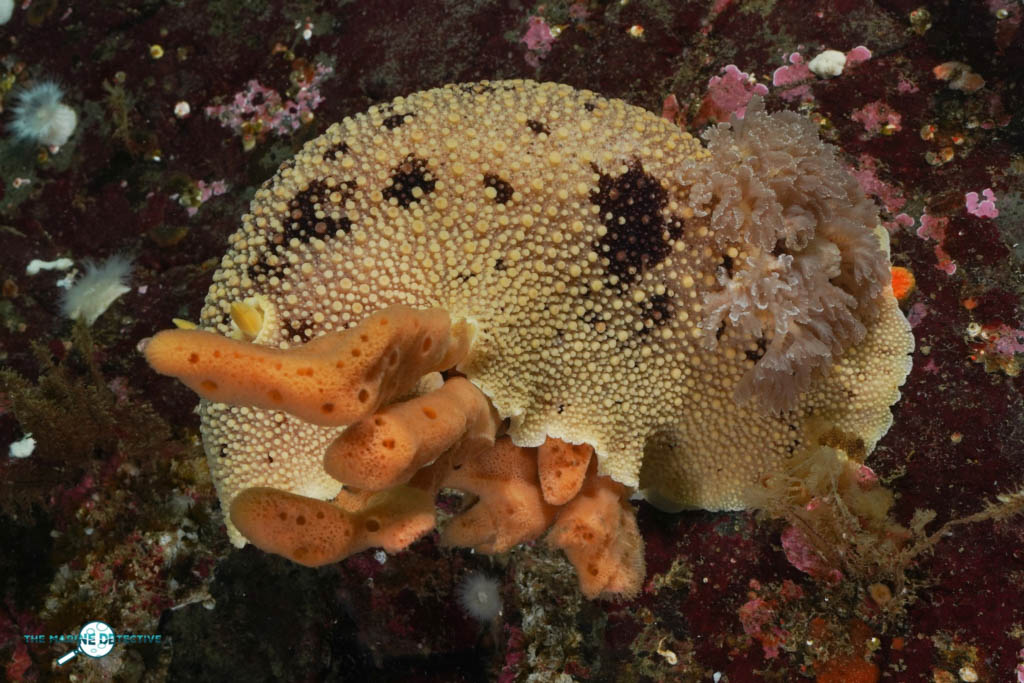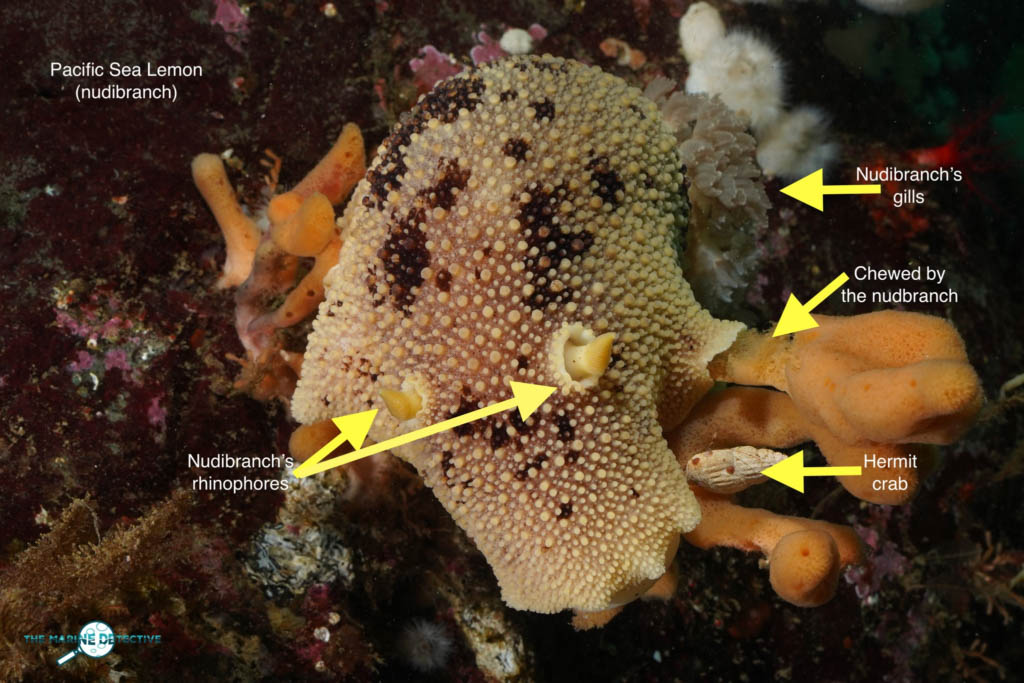Story and Pictures Submitted by The Marine Detective (Jackie Hildering)
Huge nudibranch today.
Pacific Sea Lemon at around 25 cm long feeding on a species of finger sponge. You can see where the nudibranch has been chewing. You can also see the nudibranch’s gills (for respiration) and rhinophores (the structures with which they detect chemicals to smell their way around).
Yes, there’s also a hermit crab with tiny limpets growing on the shell.
Why a “Pacific Sea Lemon” as the common name? Well they are one of the species of nudibranch that are yellow like a lemon but they are also reported to have a “penetrating, fruity odour, which may fend off predators”.
Sponges are often noxious (taste bad) to deter other predators. Clearly, the nudibranchs who eat them have evolved not to be deterred. Some nudibranch predators of sponges are known to take on the bad taste of the sponge as well.
The Pacific Sea Lemon (Peltodoris nobilis) is sometimes misidentified with another big, yellow nudibranch – the Monterey Dorid (Doris montereyensis).
But you can see here Pacific Sea Lemons have white gills and the brown markings do not extend up the tubercles (those bumps on the body). Monterey Dorids have yellow gills and the brown does extend up the tubercles. They also are only up to 15 cm long.
Jackie Hildering, The Marine Detective
Photos: April 2nd, 2023, near NE Vancouver Island, Namgis Territory ©Jackie Hildering, The Marine Detective.






